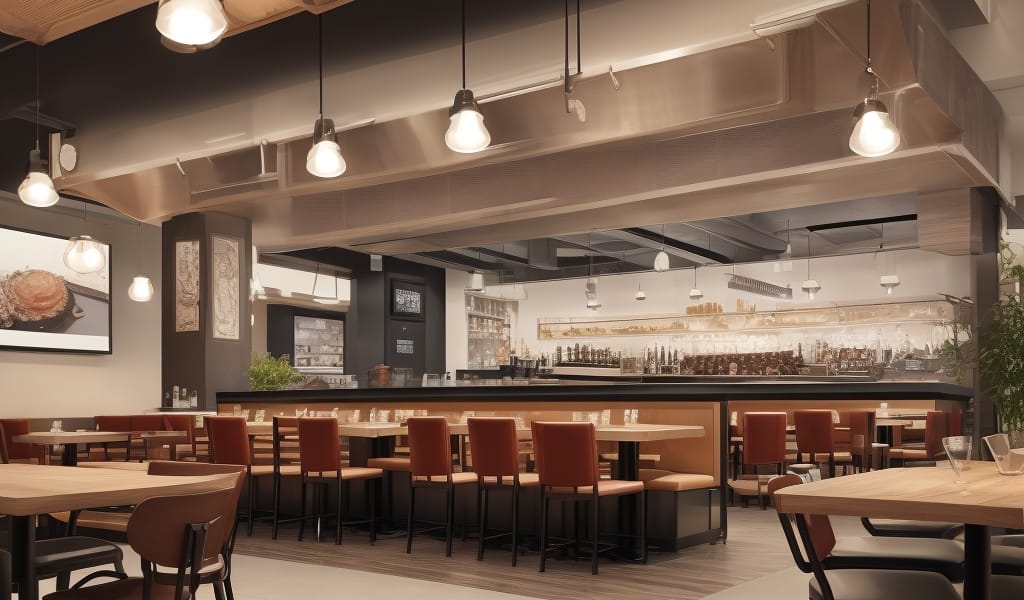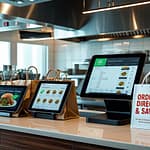Key Takeaways:
- Consider implementing voice ordering in your restaurant to stay up-to-date with current food trends.
- Research smart ordering technologies to understand how they can improve efficiency and customer service.
- Evaluate the potential impact of voice ordering on your existing workflow to ensure a smooth transition.
- Train your staff on using voice ordering systems to maximize their benefits and minimize errors.
- Monitor customer feedback regarding voice ordering to continually improve the system according to their needs.
Voice Ordering for Restaurants: Just a Buzzword or the Real Deal?
Explore the rise of voice ordering in restaurants
In the evolving landscape of restaurant technology, voice ordering has emerged as a compelling buzzword. But is voice ordering merely another trendy technology, or does it represent a genuine, lasting shift in the way restaurants operate? With giants like Amazon Alexa, Google Assistant, and Apple Siri becoming integral to daily life, voice technology has penetrated deeply into consumer habits, raising the question: how relevant is voice ordering to restaurants today?
In this article, we’ll explore the phenomenon of voice ordering, its real-world applicability, benefits, and potential challenges. We’ll also provide practical insights that restaurant owners and managers can leverage to evaluate and implement voice ordering effectively.
Understanding Voice Ordering in Restaurants
Voice ordering refers to the technology-driven approach through which customers place food orders using voice commands. This technology can manifest in several ways:
- Voice assistants integrated within mobile apps or websites
- Smart speaker integration at home or within restaurant premises
- Voice-enabled kiosks or drive-thru systems
As consumers become increasingly comfortable with voice-activated systems in their daily lives, restaurants are now exploring voice ordering as a means to enhance customer convenience, improve operational efficiency, and stay competitive in a digital-first market.
Why Voice Ordering is Gaining Traction
Convenience and Speed
Today’s diners prioritize convenience. Voice ordering simplifies the ordering process, allowing customers to place their orders hands-free and multitask. For instance, a busy parent at home can effortlessly reorder a family’s favorite meal via smart speaker while managing other household chores.
Personalization and Smart Ordering
Advanced voice technologies now incorporate artificial intelligence and machine learning to remember previous orders, preferences, and dietary restrictions. This smart ordering capability enables restaurants to offer personalized recommendations, enhancing customer satisfaction and fostering loyalty.
Accessibility for All Customers
Voice ordering makes restaurants more inclusive by providing accessible ordering options for visually impaired customers or those with mobility challenges. By removing traditional barriers, restaurants can expand their customer base and demonstrate genuine commitment to inclusivity.
Industry Examples: Voice Ordering in Action
Domino’s Pizza and Alexa Integration
Domino’s Pizza has successfully leveraged Amazon Alexa to enable voice ordering. Customers can quickly reorder their favorite pizzas by simply saying, “Alexa, ask Domino’s to reorder my last order.” This seamless integration has significantly streamlined the ordering experience, leading to increased customer engagement and repeat business.
Chipotle’s Voice Assistant Integration
Chipotle Mexican Grill partnered with Google’s Assistant to allow customers to place voice orders through Google-enabled devices. The integration not only streamlined the ordering process but also enhanced brand visibility among tech-savvy consumers, showcasing Chipotle’s commitment to innovation in customer experience.
McDonald’s Voice-Activated Drive-Thru
McDonald’s has tested voice recognition technology in drive-thrus, aiming to speed up ordering and reduce errors. Early pilot programs demonstrated promising results, highlighting the technology’s potential to improve operational efficiency and customer satisfaction simultaneously.
Benefits of Implementing Voice Ordering in Restaurants
Improved Operational Efficiency
Voice ordering reduces manual order-taking tasks for staff, freeing them to focus on food preparation, customer engagement, and service quality. Additionally, voice systems can handle multiple orders simultaneously, significantly reducing wait times and enhancing productivity.
Reduction in Order Errors
Human errors in order-taking can often lead to customer dissatisfaction and increased waste. Voice ordering systems accurately capture customer preferences and specifications, greatly reducing misunderstandings and incorrect orders.
Enhanced Customer Experience
By integrating voice ordering, restaurants can provide a frictionless, enjoyable interaction for customers. Personalization, convenience, and accessibility lead to increased customer loyalty, repeat visits, and positive word-of-mouth recommendations.
Challenges to Consider Before Adoption
Technology Implementation Costs
Implementing voice ordering technology requires initial investment in hardware, software, and staff training. Restaurant owners should carefully consider these upfront costs against potential long-term gains in efficiency and customer satisfaction.
Customer Privacy Concerns
Voice ordering involves capturing and processing customer voice data, raising potential privacy concerns. Transparency about data collection, clear privacy policies, and secure data management practices are essential to maintaining customer trust.
Integration with Existing Systems
Voice ordering systems must integrate seamlessly with existing restaurant management and POS systems. Compatibility issues can cause operational disruptions, requiring careful selection of technology providers and thorough testing before full-scale implementation.
Practical Advice for Restaurant Owners and Managers
Evaluate Customer Readiness
Before adopting voice ordering, assess whether your customer base is comfortable with technology-driven ordering methods. Conduct surveys or pilot programs to gauge customer interest and gather valuable feedback.
Start Small, Scale Gradually
Begin by implementing voice ordering on a limited scale, such as integrating it into mobile apps or select locations. Monitor customer response and usage patterns carefully before expanding the technology broadly across all operations.
Prioritize Staff Training and Support
Ensure staff are well-trained to handle the integration of voice ordering technology. Proper training will help employees feel confident using new systems and allow them to assist customers more effectively, thus enhancing overall customer experience.
Choose a Reliable Technology Partner
Select a technology provider experienced in restaurant voice ordering solutions. Evaluate their track record, customer support availability, and compatibility with your existing systems to ensure a smooth implementation process.
Maintain Transparency with Customers
Clearly communicate how customer voice data is collected, used, and protected. Providing transparency around privacy measures will build customer trust and alleviate concerns about data security.
Conclusion: Voice Ordering – Here to Stay or Passing Trend?
Voice ordering is more than just a buzzword; it’s a transformative technology reshaping restaurant operations and customer interactions. Industry leaders like Domino’s, Chipotle, and McDonald’s are already recognizing tangible benefits from voice ordering systems, including improved efficiency, reduced errors, and enhanced customer experiences.
However, successful implementation requires thoughtful planning, gradual adoption, and thorough staff training. Restaurant owners and managers must carefully weigh the initial investment against potential long-term benefits, considering customer readiness, technological compatibility, and data privacy concerns.
While voice ordering may not yet be universally adopted, the broader consumer shift toward smart technology suggests that voice-enabled systems are likely here to stay. Restaurants that proactively embrace this trend today can position themselves as innovative leaders, ready to meet evolving consumer expectations head-on.






Comments
Be the first to comment on this article.